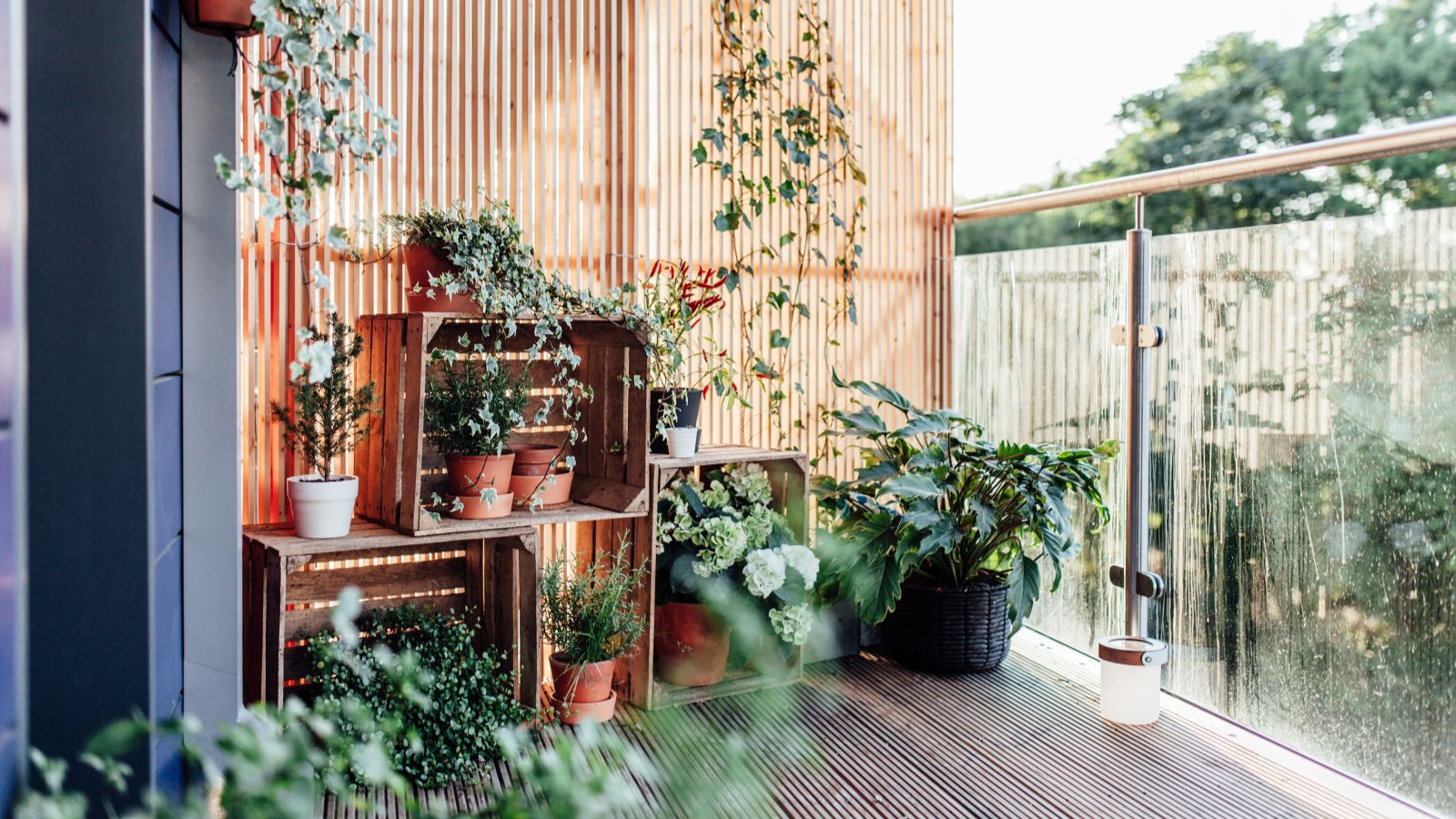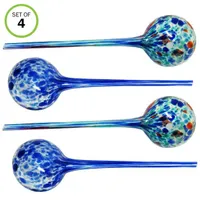‘Treat it like a rescue mission’ – how experts revive dried-out potted plants
No matter if you have a wilting houseplant, or a less-than-impressive patio pot, here’s how to revive even the saddest of dried-out potted plants


There are several reasons why a potted plant may be suffering from a lack of water – whether we have become lax in our plant care schedule, or the plant has been subject to extreme temperatures.
When watering plants in containers, there are a few key things you need to consider before you flood the dried-out soil with a dousing of fresh water and hope for the best, which can cause shock to the roots.
Here, horticulturalists and garden experts have explained how you can revive a dried-out plant easily, without making the problem worse.
How to revive a dried-out plant
The first rule when rehydrating a dried-out plant is to treat it like a rescue mission, says Bryan Clayton, garden expert at GreenPal. ‘This plant is going to need a gentle hand because, trust me, it can crumble if you're too rough.
'Let me explain why: when plants are severely dehydrated, their leaves and stem become brittle, and the soil will pull away from the sides of the pot,’ he warns.

1. Don't flood the plant all at once
A common garden watering mistake is to flood a plant with water at the first signs of dryness. If the potting medium is too hard, the water will flow off the top and down the sides of the pot before it has the time to sink in. Instead, you should try to water the plant carefully, and consider watering plants from the bottom instead, suggests Nina Grebin, indoor plant and container expert at Molbak’s Garden and Home.
‘My number one "plant hack" that has completely solved most of my watering-related plant problems is bottom watering,’ she says. ‘Fill your sink, bathtub, or a large saucer with water and simply set plants in the water for 20-30 minutes. The plants will absorb the amount of water they need, so you won’t have to worry about overwatering, and the best part is the top layer of soil will often stay dry so fungus gnats won’t be as likely to set up camp in your soil,’ she adds.
Design expertise in your inbox – from inspiring decorating ideas and beautiful celebrity homes to practical gardening advice and shopping round-ups.
That being said, it is important to still water the plants from the top every so often to ensure nutrients are pushed down through the soil evenly, Nina adds. She likes to do this once a month for indoor houseplants, but more commonly for patio pots where bottom watering can be laborious.
‘When doing a full soak, I will water from the top until water flows freely through the bottom of the pot,’ she adds.
Decorative watering globes I $22.99 at Walmart
This set of four decorative watering globes is perfect for watering your plants regularly and gradually when you are busy or on vacation, and will help to avoid dried-out soil.
2. Ensure the plant can drain away excess water easily
When trying to add water back into the soil, it is important to remember the plant still needs to be able to drain excess out. After saturating your plant soil, leaving the water to sit (or leaving it in the container of water for too long) can result in the opposite problem – root rot. This is a much harder problem to solve, Bryan Clayton, gardens expert explains. So it is best to avoid it in the first place.
Make sure to take the plant out of a bottom watering container as soon as you notice that no more water is being absorbed, and research what you should put in the bottom of a container for adequate drainage, depending on your plant type and its preferences.
3. Keep the plant away from direct sunlight
Plants for pots all need sun, but too much can quickly dry out the soil and deprive the plant of water. As a result, it is best to remove the dried plant from window sills and direct sun spots in yards to give it the best chance of absorbing the added water – rather than leaving it to evaporate, recommends Bryan Clayton, garden expert.
There are plenty of dos and don’ts of watering plants in hot weather, with avoiding peak sunshine hours being one of them. But when a plant is dying, this rule can be scrapped, suggests Tom Knight, houseplant expert and owner of Our Houseplants.
‘You have to act fast,’ he says, ‘regardless of whether it is the end of the day or under the midday sun. That wisdom has its place, but when you're at this point, you need to get water into the potting medium ASAP. Move the plant somewhere out of the sun, even if the weather is still on the warm side, and get watering.’

Tom has been caring for houseplants almost his whole life, having learned about the art of horticulture from all four of his grandparents, growing up in houses and gardens full of plants and flowers.
FAQs
How long does it take for a wilted plant to recover?
A wilted plant can recover in a few weeks with the right care and attention to address the root cause of wilting. It is worth noting, however, that not every wilted plant has the stored energy to make a full recovery, and some plants can take months to look as they did originally. This process is much easier for houseplants but can be done with outdoor plants so long as the weather remains favorable.
Can overwatering cause dry leaves?
Overwatering a plant will result in soft, limp leaves that may also lose their color, with underwatering resulting in dry crispy leaves that fall from the plant when touched. If you have been regularly watering your plant and have noticed dry leaves, then it may be that you are watering the plant incorrectly, with too little water, not frequently enough, or are top watering when the plant prefers to soak up water from the bottom.
All in all, it is better to under-water your plant and rehydrate it than over-water it and try to dry it out, but you should really try to avoid both. ‘Plant CPR takes patience,’ reminds garden expert Bryan Clayton. It may be that your plant perks up by lunchtime, or it could take a few weeks of gradual care and attention to restore it to its former glory.
To prevent plants from being under watered again in the future, consider using watering globes for your indoor houseplants, or making your own DIY drip irrigation system to help treat patio containers.

Chiana has been at Homes & Gardens for two years and is our resident 'queen' of non-toxic living. She spends most of her time producing content for the Solved section of the website, helping readers get the most out of their homes through clever decluttering, cleaning, and tidying tips. She was named one of Fixr's top home improvement journalists in 2024.
